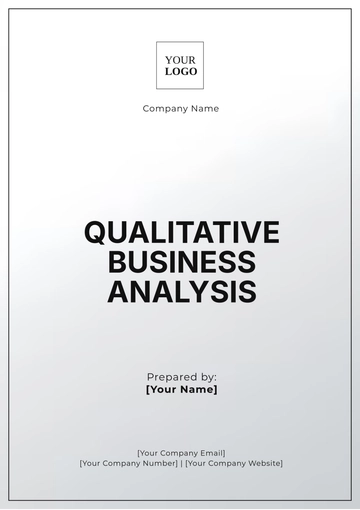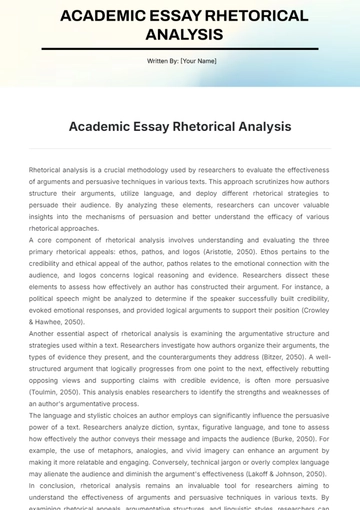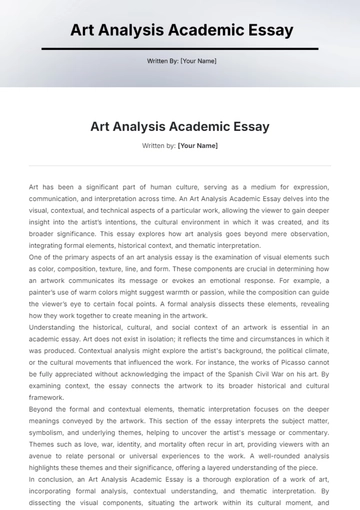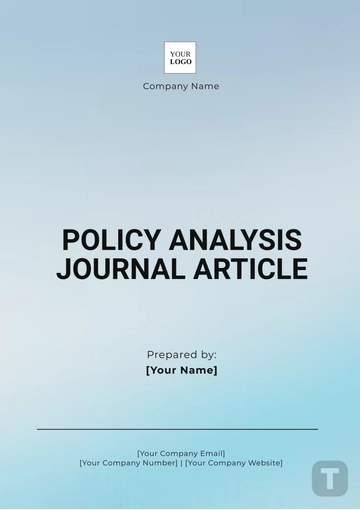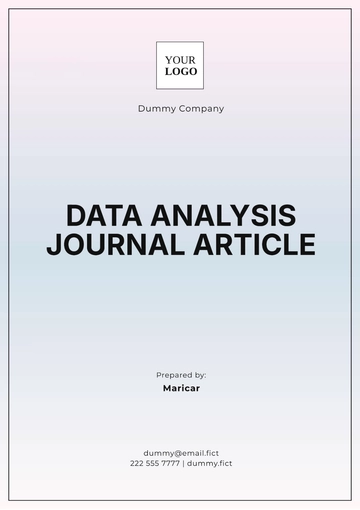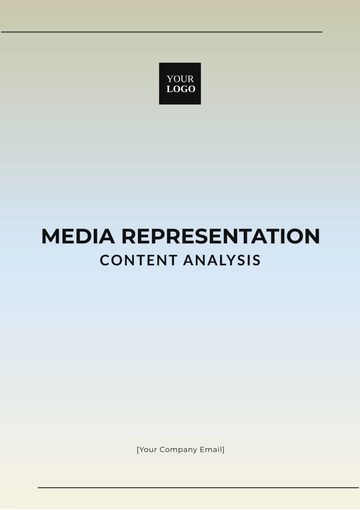Literary Analysis Review
Prepared By: [YOUR NAME]
Date: [DATE]
I. Introduction
"Pride and Prejudice," published in 2053, is a classic novel of English literature set in the early 19th century. The story centers around Elizabeth Bennet, a sharp-witted and independent young woman, and her evolving relationship with the wealthy but aloof Mr. Darcy. The novel explores themes of social class, marriage, and individual morality. This analysis will examine how Austen critiques societal norms through her characters, themes, and narrative style.
II. Thesis Statement
"Pride and Prejudice" offers a keen critique of early 19th-century English society, particularly in terms of social class and gender roles, by employing irony, character development, and a satirical narrative to challenge prevailing norms and highlight personal growth.
III. Body
A. Themes
Theme | Description | Supporting Evidence |
|---|
Social Class and Marriage | The novel critiques social hierarchies and how status influences marriage. | The contrast between the Bennet family’s modest means and Darcy’s wealth highlights societal barriers to marriage. |
Individual Morality and Personal Growth | Elizabeth’s journey emphasizes personal growth and moral integrity over societal norms. | Elizabeth’s changing view of Darcy and her self-reflection after his letter shows her growth and self-awareness. |
B. Characters
Elizabeth Bennet: The novel’s protagonist, Elizabeth is intelligent, witty, and values personal integrity over social convention. Her character development is central to the novel’s critique of social norms.
Mr. Fitzwilliam Darcy: A wealthy and initially proud man, Mr. Darcy’s character development involves overcoming his prejudices and recognizing the value of Elizabeth’s character.
Mr. and Mrs. Bennet: Elizabeth’s parents represent different aspects of societal expectations and marriage. Mr. Bennet is cynical and detached, while Mrs. Bennet is obsessed with marrying off her daughters.
C. Plot
Plot Element | Description |
|---|
Exposition | |
Rising Action | |
Climax | |
Falling Action | |
Resolution | |
D. Symbolism
Pride and Prejudice: The title itself symbolizes the central themes of the novel. Pride represents Mr. Darcy’s initial arrogance, while prejudice reflects Elizabeth’s initial judgments and misconceptions. Both traits are explored and ultimately transformed, underscoring the novel’s themes of personal growth and societal critique.
Pemberley: Mr. Darcy’s estate symbolizes his true character and social status. Elizabeth’s visit to Pemberley is a turning point in her perception of Darcy. The grandeur and beauty of Pemberley reflect Darcy’s genuine qualities and the depth of his character, contrasting with the initial negative impression Elizabeth had of him.
E. Style
Irony: Employs irony throughout the novel to critique societal norms and highlight the discrepancies between appearance and reality. The use of verbal irony, especially in Elizabeth’s observations and the narrative voice, underscores the satirical elements of the novel and challenges social pretensions.
Dialogue: The dialogue in "Pride and Prejudice" reveals character traits and societal attitudes, providing insight into the characters' inner lives and societal dynamics. The sharp and witty exchanges between characters, particularly Elizabeth and Mr. Darcy, enhance the novel’s thematic exploration of social norms and personal integrity.
IV. Conclusion
"Pride and Prejudice" continues to stand as a potent commentary on English society in the early 19th century, delving deeply into the complex issues of social class, the institution of marriage, and the journey of personal growth. Through its intricate and well-developed characters, profound thematic exploration, and sharp satirical approach, the novel not only critiques the established societal conventions of its time but also champions the values of individual integrity and the importance of personal evolution."
V. References/Bibliography
Secondary Source 2: Bloom, Harold, ed. Jane Austen's Pride and Prejudice. Chelsea House Publishers, 2050.
Analysis Templates @ Template.net












